The first time I visited the Yale Peabody Museum in New Haven was shortly before they closed for their several year renovation project. It felt dated, and I say that as someone who holds onto clothing for decades and doesn’t see the point of ripping out one’s kitchen simply because their counters aren’t in style anymore.
I recently had the chance to visit the newly reopened Peabody Museum, and briefly, here’s the impression it made.
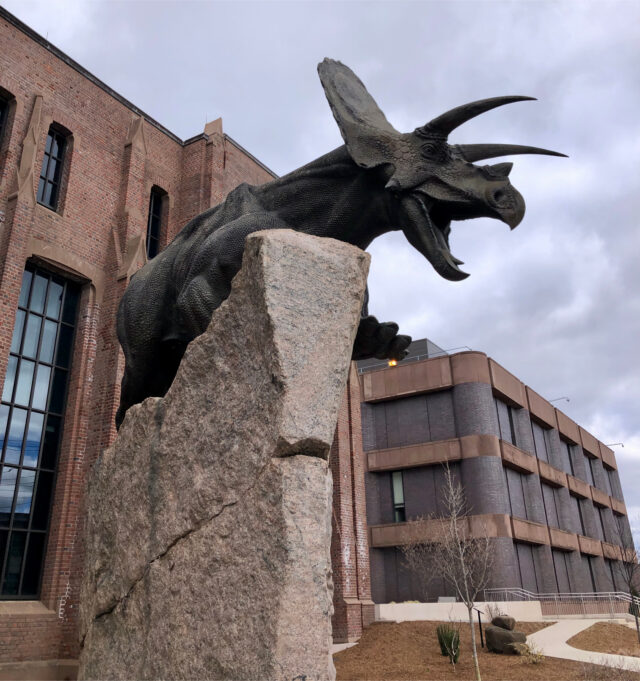
GROUNDS
Aside from my friend (above), the grounds really look different now. It had been boring grass and boring shrubs. The new look is more natural and will look nicer in a few months, I’m sure.
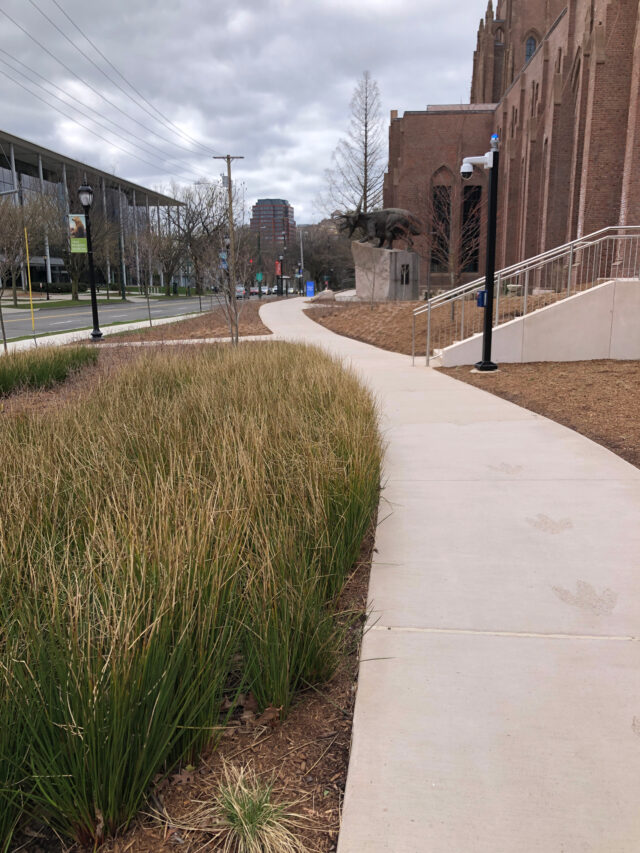
TICKETING/ENTRANCE
Admission is completely free, for everyone. The catch, right now, is that you need to get tickets in advance online. As of early April, they’re completely booked for May and for half of June. When I showed up at 12:01 for my 12 PM admission time, there was a line of probably 50+ people. The good thing is that once doors opened, the line moved rapidly and I made it inside within five minutes. The process was as simple as having staff scan the barcode on the ticket that was emailed to me. That was it — no additional questions.
GALLERIES
The only parts of the museum that felt recognizable to me were the stairwell and the building’s exterior.
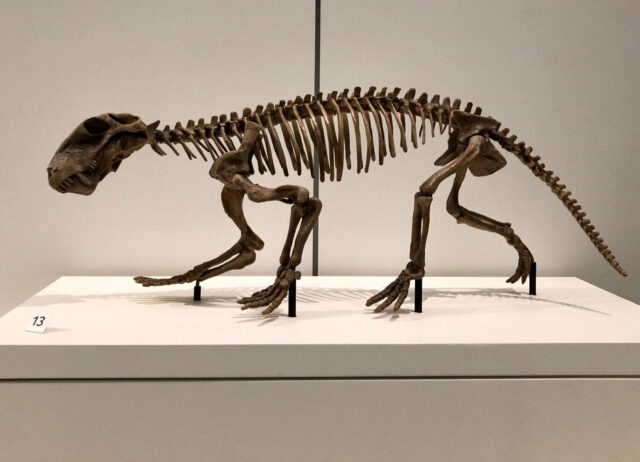
The Hall of Dinosaurs is lighter and brighter.
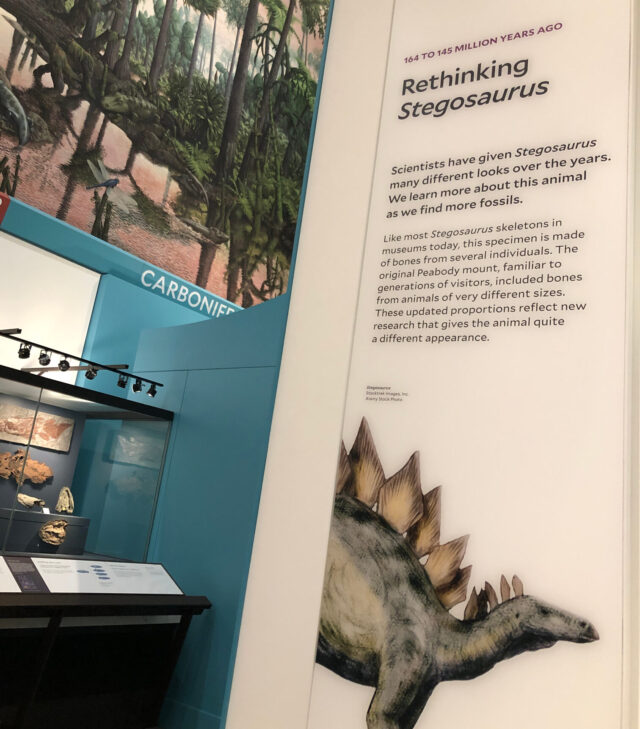
The presentation of objects felt fresh. Some, like the Stegosaurus, were given a scientific (not cosmetic) makeover to reflect what had been learned since it was originally mounted in 1910.
There was a lot I don’t remember seeing before, and I don’t know if that’s because it wasn’t displayed or because the way it had been exhibited previously was forgettable.
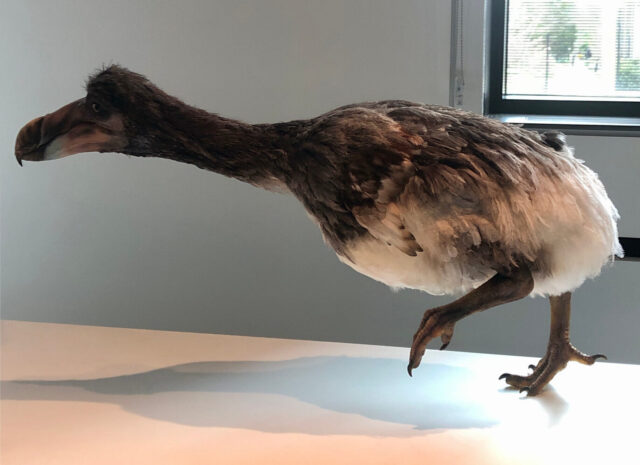
The dodo was given more of the presentation that it deserves.
There are benches and seats sized to realistically accommodate the adult human’s bottom, and placed in enough rooms that I didn’t ever feel annoyed having to look for one.
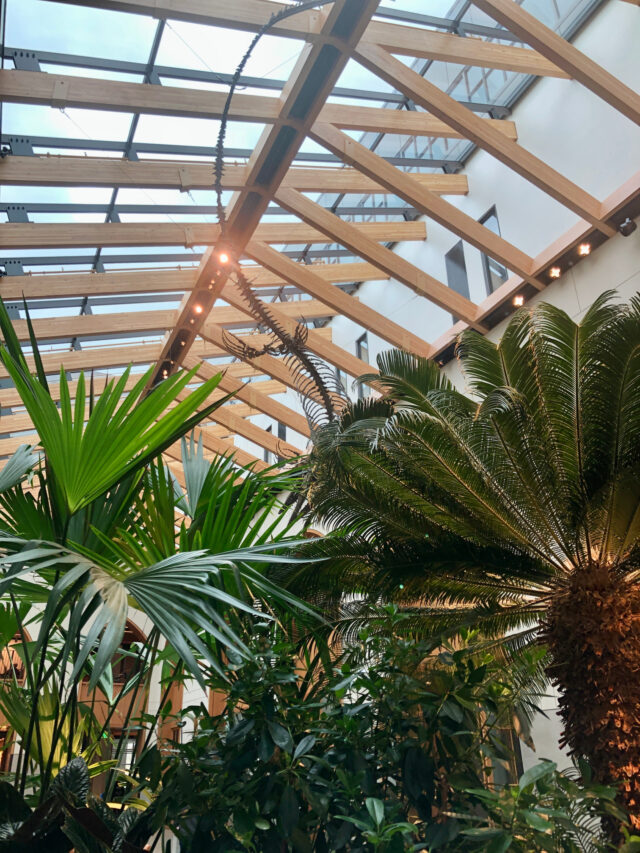
I do wish there was more to the botany area, but I enjoyed what was there.
The second floor galleries were not as bright; this made sense because of the types of objects displayed. This is where to find the History of Science and Technology, Egypt and Mesopotamia, and Mesoamerican & Andean Civilizations exhibits. There were still a number of objects yet to be installed on the second floor. The early written record of a fellow Gemini’s horoscope was a highlight for me. From the second floor, you have an aerial view of Dinosaur Hall, but it’s enclosed so there’s no danger of overexcited visitors toppling over railings.
The third floor — Minerals, Earth & Space; North American Dioramas; Connecticut Dioramas; Dynamic Nature; and Living Lab — has yet to reopen. I knew this going in and was a little bummed since that’s what I find most interesting, but once I began my visit I realized I would have been too exhausted to see all three floors on one day.
MUSEUM LABELS
My biggest complaint about museums in general is that too often people who are dull or rigid in their perspective of what labels and wall text can contain are the very ones in charge of them. It’s like when people say they hate literature or history, and then realize later in life they actually are interested in these subjects . . . they simply had uninspired teachers. I’m judgy about labels. A good label can be three times what some museum professionals consider the maximum length if the content is engaging; a bad label can be that exact “regulation” length and fail if my eyes glaze over before I finish half the first sentence.
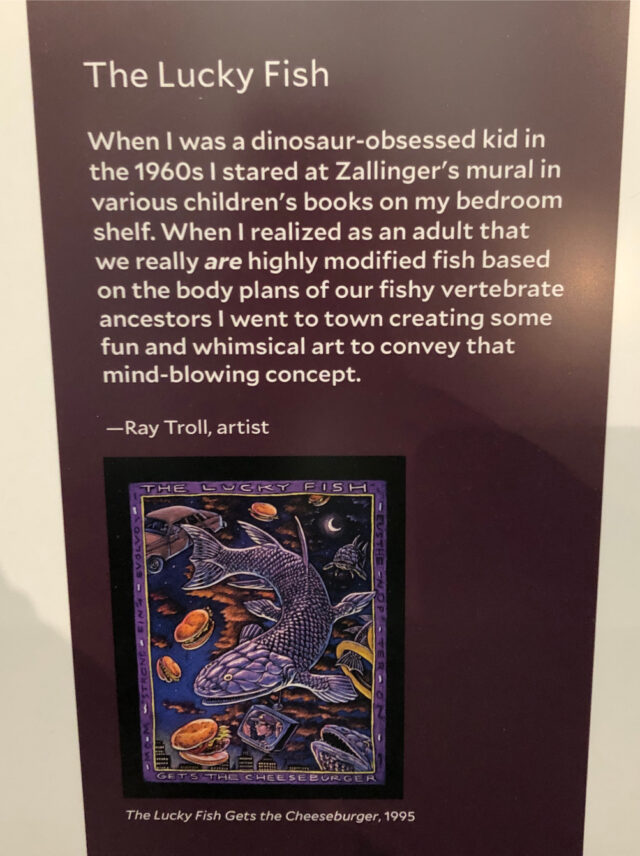
The Peabody’s labels are engaging. They’re conversational without dumbing down content. Headlines grabbed my attention around displays that I may have overlooked, making me pause and take the time to learn about what I could’ve walked right by.
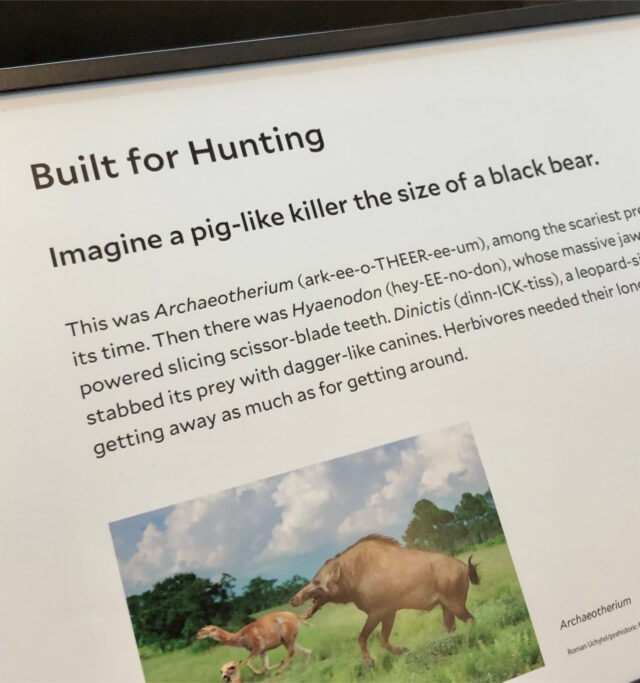
That alone would have been a massive improvement, but the museum has done something else that I know Yale haters won’t want to give them credit for.
Over the last decade, the museum world has been having conversations about decolonizing museums. The general public may not be aware of this, but I assure you, these discussions have been frequent and happening at all levels, even if the word “decolonization” is not used. They include everything from repatriation/rematriation to reparative descriptions in cataloging.
The Peabody Museum has taken steps; I’m sure they could go further than they have, but I’m equally sure that what they’ve done is going to leave some visitors asking to speak to a manager.
There are folks who believe museums are palaces of objectivity; museums are not neutral.
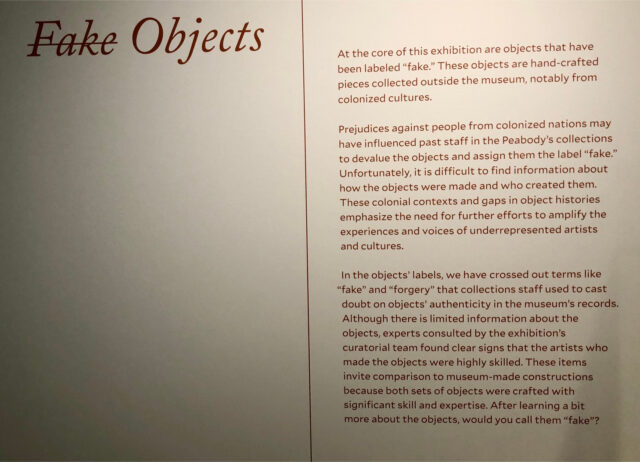
The remodeled stegosaurus feels like a fairly uncontroversial way for an institution to admit that they were previously incorrect in their assessment, but the Study Gallery is more daring, and exactly what museums need to be doing: taking steps toward repairing harm that they may have caused.
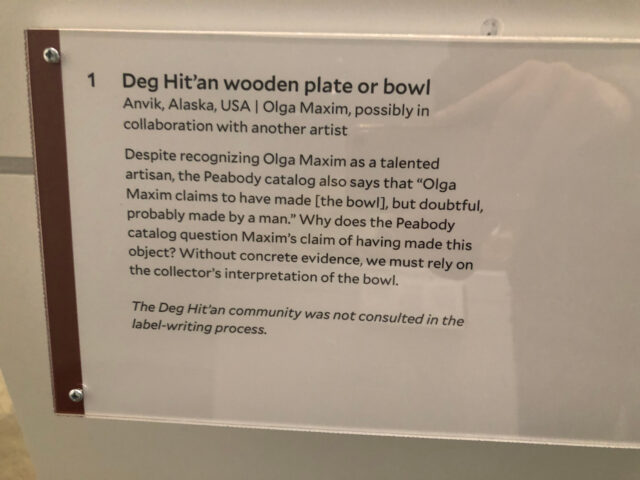
I like how challenging this section will be for some visitors.
This is not the only place where you’ll see labels that show the museum has joined the times. In the History of Science & Technology exhibit, one label reads: “Finely crafted objects like these were fashionable symbols of wealth and power in Europe. They were traded across colonial networks and often made of materials such as ebony, mahogany, and ivory from Asia, Africa, and the Americas. This commerce contributed to atrocities against Indigenous and enslaved people, along with depletion of local natural resources.” No mincing of words there.
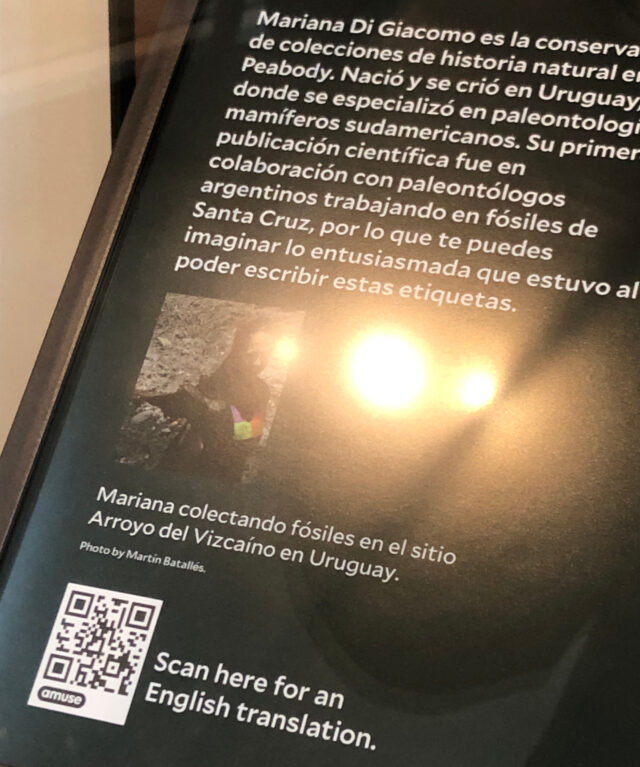
In the exhibit A World of Change, one display’s text is in Spanish. To get the English translation, you need to scan a QR code. Another display nearby has text in Spanish first, then in English.
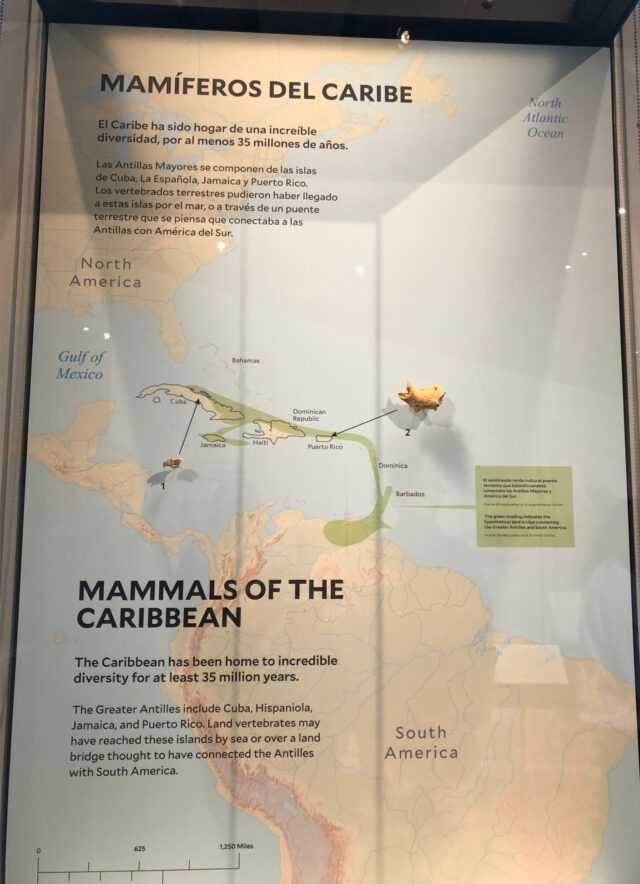
More care is given to how funerary objects are presented.
Before entering the museum, visitors coming from one direction pass the Memory Pile, which serves as a land acknowledgement somewhere more prominent than on an organization’s website.
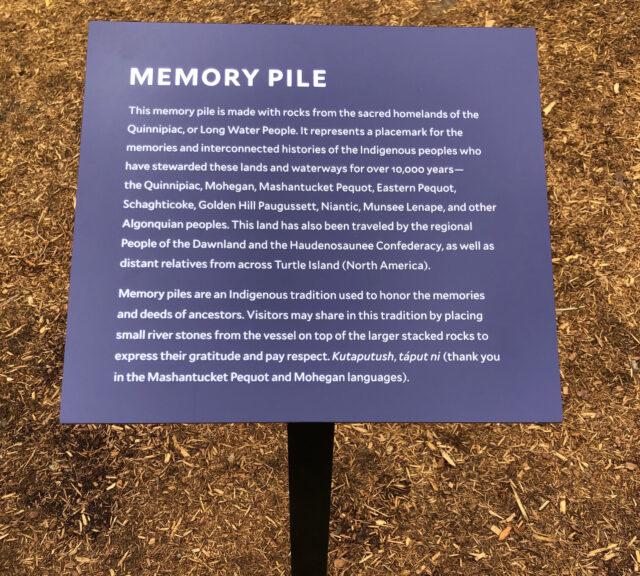
TAKEAWAY
The day I was there, staff were constantly wiping down surfaces and cleaning exhibit cases in every gallery; I hope the museum maintains this level of attention to upkeep once the new museum smell wears off.
The renovation was worth the wait.
Getting There: Take any of the trains to New Haven. It’s a 20-minute walk from State Street Station, which might seem like a lot for some people, but there are many places along the way — restaurants, cafes, shops, parks — that can serve as pit stops. Get your museum tickets before making the trip.
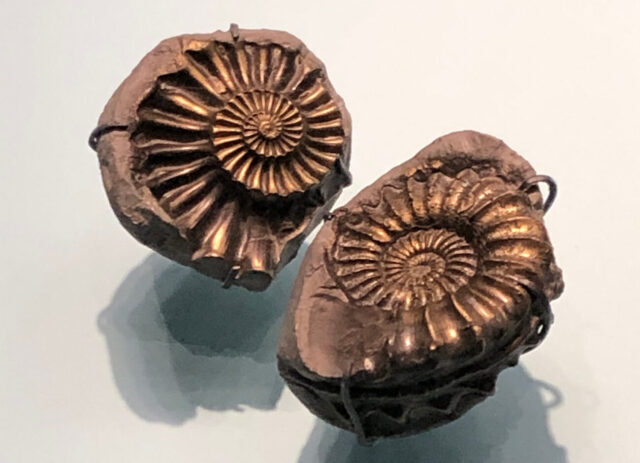


Greg Secord
Thanks for the comprehensive review. We have the museum on our todo list. Having a train ride is a plus!
Eric Dobbs
Considering it wasn’t all that long ago they still had “Gather round and gawk at the primitives!” displays with almost certainly looted artifacts and human remains from extant human cultures, this is a welcome step forward.
I definitely can’t wait to get in to see the renovated space, and this review seals my interest.